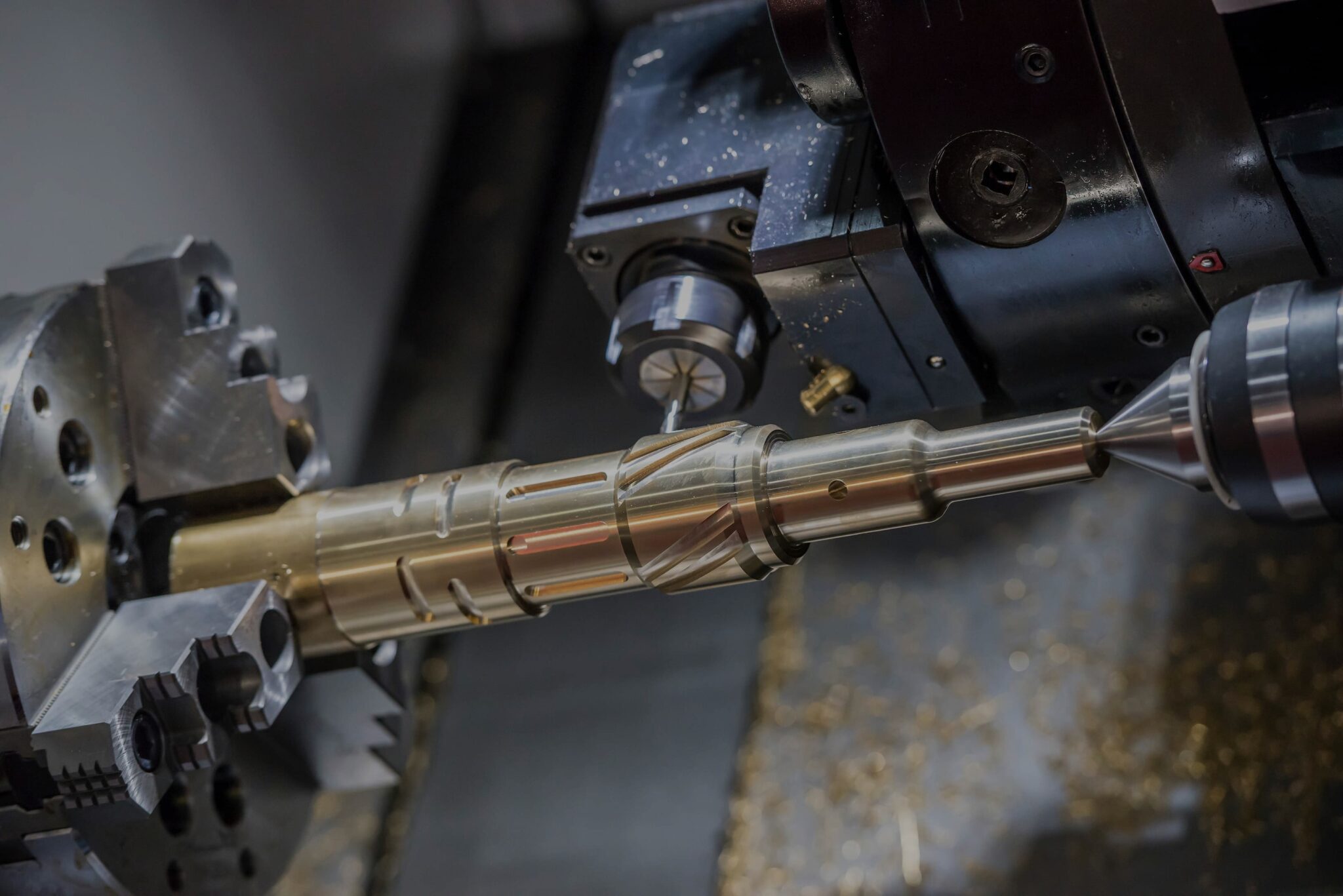

Originally published on fastradius.com on March 18, 2021
Computer Numerical Control (CNC) machining is a family of subtractive manufacturing processes that uses computer-controlled machining stations to shape parts from a larger block of material through a combination of cutting, boring, milling, and other operations.
A key advantage of the machining process is that it is compatible with a broad range of materials, from plastic and wood to metal and fiberglass. However, the fact that many materials can be machined shouldn’t be an excuse to choose a material based solely on its affordability or aesthetic benefits — you still need to carefully assess all of the relevant factors against your project requirements.
Titanium, for instance, is strong, durable, and rust-resistant, which is why it’s widely used in medical implants and aerospace applications, whereas nylon, which has strong dimensional stability and is quite wear-resistant, is well-suited for bearings and parts that will be subjected to weight or pressure.
The material selection process should begin by assessing the requirements of the part’s final application. In fact, by simply separating the absolutely essential features and properties from those that are merely beneficial, you may quickly distill the pool of viable materials to a manageable list. This is the first step to making better-informed decisions regarding material selection, but there are a few other considerations that can help you narrow down your best options.
The environment in which a part will be used is often a key deciding factor. If the component is expected to perform in unusually hot or cold environments, or will be subjected to flames, UV radiation, or harsh chemicals, then it must be designed to tolerate those conditions. A key component of effective design will be selecting the appropriate material for the job.
Medical- and food-grade materials are prime examples — in addition to being safe for personal use (e.g. guaranteed not to leach), they must be able to withstand caustic chemical sterilizations and/or the heat of an autoclave.
If your part needs to be electrically conductive or insulating, then choosing the best material for the job is of paramount importance. Nylon 6/6 is a good insulator, for instance, and copper is an excellent conductor, which is why it’s critical that each is used for the proper application.
The end-use application of a part should inform CNC material selection — especially if the application involves load-bearing, wear, or other external forces. What you’d expect from rigid, durable stainless steel components is very different from what you’d expect of polycarbonate (PC), HDPE, and other metals such as brass or aluminum.
Pinpointing desirable properties like tensile or compressive strength, flexibility, impact resistance, wear resistance, and more can help isolate specific materials that are best-suited for the function of the part.
Appearances may be a secondary consideration for many product teams, but for some parts, aesthetics are of critical importance — especially for consumer products. Product teams may be seeking materials with specific cosmetic options, including surface finishes, transparency, or color.
Plastics are typically available in a wide range of colors, while most metals can be colored through post-processing. Furthermore, a surface finish — whether it’s a high polish gloss or non-slip texture — can often enhance the part from both the aesthetic and functional perspectives.
A part’s dimensional tolerances impact everything from material choice to CNC machining design, cutting tools, and production costs. Different materials respond to cutting forces in different ways, and some are inherently easier to machine. This results in attainable tolerances that are slightly different between materials, even on the same machinery.
If tight, repeatable tolerances are a concern, then it is important to understand the possible tolerances for the selected material. And if dimensional tolerances are not of critical importance for a particular part, relaxing them can potentially reduce the time and expense associated with machining the part.
Of course, material costs are an important consideration for most product teams, who are often tasked with developing innovative solutions with tight budgets. Say you find the perfect material for a part you’re designing, but it’s prohibitively expensive. What do you do?
In some cases, a next-best option might be obvious, but you may also need to make some compromises and carefully weigh the functionality, strength, hardness, and other factors of different materials.This will allow you to determine the material or materials that best suit your specific project requirements.
Your choice of material affects almost every aspect of the product lifecycle — from prototyping and production to how it holds up against natural wear in its final application. Material selection is a vital part of ensuring that a part will function as intended.
Considering the wide range of potential materials available to engineers and product teams, having a trusted manufacturing partner like SyBridge to guide you through the product selection process can simplify the process dramatically. Our team provides design optimization, product development, materials engineering, on-demand manufacturing, and fulfillment services.
Plus, with in-house machines and a team of skilled software engineers and machinists, we’re an industry leader in CNC machining — we drive production for end-use parts as well highly efficient, multi-process machining setups. Contact us today to find out how we can make your vision a reality.
Forget typical cycle times. We're pushing the boundaries of conformal cooling. While traditional approaches deliver…
Forget typical cycle times. We're pushing the boundaries of conformal cooling. While traditional approaches deliver…
From left to right: Brayden Janak (apprentice); Logan Vifaquain (CNC machining, Programming and CMM); Ron…
SyBridge Technologies is proud to announce we have been awarded the 2023 General Motors Supplier…
Today, designers and engineers are accustomed to working with digital tools in their day-to-day jobs.…
Optimizing Your Injection Molding Process for Cost-Effective Manufacturing Excellence In today’s competitive landscape, manufacturers are…